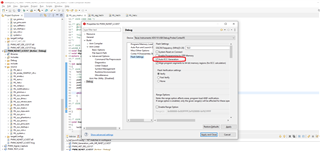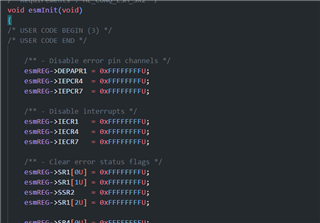Other Parts Discussed in Thread: UNIFLASH
Tool/software:
After powering up and enabling FIRQ, the ESM high-priority interrupt is immediately triggered.
After a while, when FreeRTOS starts scheduling, the interrupt is triggered again. After that, the program seems to run normally, and the fault no longer occurs.
Both times the fault occurred, esmREG-> IOFFHR = 36.
I checked the corresponding manual, and it appears that this fault is related to Cortex-R5F Core - All fatal bus error events. [Commonly caused by improper or incomplete ECC values in Flash.]
I found a similar issue in another thread. The solution seems to be using vfill to fill the entire flash.
However,we add some data to the file after CCS generates the hex, which seems to make it difficult to ensure ECC correctness. Also, I’m not sure if this is the reason for the interrupts. Sometimes, after burning an additional application, the interrupts don’t seem to occur








